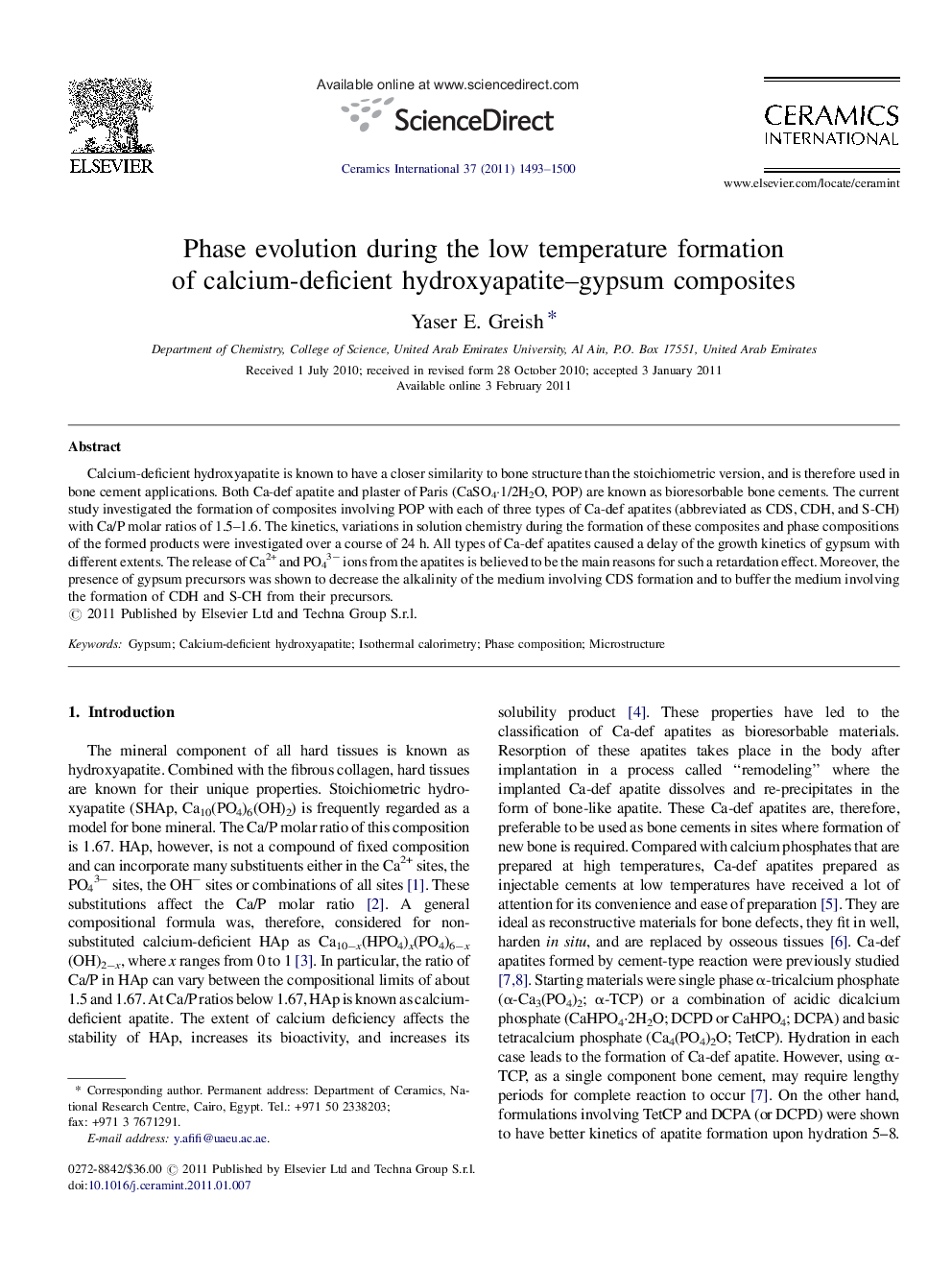| Article ID | Journal | Published Year | Pages | File Type |
|---|---|---|---|---|
| 1462331 | Ceramics International | 2011 | 8 Pages |
Calcium-deficient hydroxyapatite is known to have a closer similarity to bone structure than the stoichiometric version, and is therefore used in bone cement applications. Both Ca-def apatite and plaster of Paris (CaSO4·1/2H2O, POP) are known as bioresorbable bone cements. The current study investigated the formation of composites involving POP with each of three types of Ca-def apatites (abbreviated as CDS, CDH, and S-CH) with Ca/P molar ratios of 1.5–1.6. The kinetics, variations in solution chemistry during the formation of these composites and phase compositions of the formed products were investigated over a course of 24 h. All types of Ca-def apatites caused a delay of the growth kinetics of gypsum with different extents. The release of Ca2+ and PO43− ions from the apatites is believed to be the main reasons for such a retardation effect. Moreover, the presence of gypsum precursors was shown to decrease the alkalinity of the medium involving CDS formation and to buffer the medium involving the formation of CDH and S-CH from their precursors.
